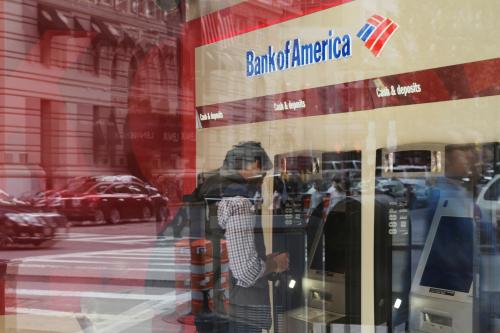Executive Summary
While America spent the past decade upgrading its bank based magnetic striped cards with chips, China experienced a retail payment revolution. Leapfrogging the card-based system, two new payment systems have come to dominate person-to-person, retail, and many business transactions. China’s new system is built on digital wallets, QR codes, and runs through their own big tech firms: Alipay running through Alibaba (China’s version of Amazon) and WeChat Pay running through Tencent (China’s version of Facebook).
China’s system largely disintermediates banks from payment transactions robbing banks of an important and long-standing source of revenue. It creates an alternative payment ecosystem with different incentives between merchants, consumers, and payment system providers. It challenges the long-standing placement of payments on the side of banking as opposed to commerce. In doing so, this system creates new incentives that could realign existing business models and relationships between merchants, banks, and technology providers.
China’s new payment system exploded in under a decade, growing from inception to dominance. With over a billion users on each platform, the power of network incentives has been unleashed. The new payment system has replaced cards and cash at registers, how families give gifts, and even how beggars ask for money, with QR codes replacing tin cups.
What is the future of this system in China and globally? Will it replace the bankcard-based system that launched in America and took over the world? What does it mean to have a payment system migrate from the banks to tech?
This report goes into substantial detail on these and other important questions. The main findings are:
- China’s new payment system is here to stay. It will continue to grow domestically and globally, following Chinese travelers and consumers abroad.
- New technology makes possible the movement of the payment system away from banking and into technology and social networking. Technology and social network firms have other sources of data on which to base financial decisions such as providing credit. Alternative underwriting is likely to follow alternative payments.
- The incentives created by moving the payment system from banking to technology firms are substantial and potentially concerning. The potential for anti-competitive behavior and privacy concerns by tech platforms by using the payment system and data generated from it are real. However, it is not clear whether these concerns can and would be remedied by effective regulation.
- The economics of China’s system are beneficial for merchants but bad for Chinese banks, especially in the short-run.
- The Chinese system is unlikely to catch on in America, but may be more viable in other countries with less developed banking systems.
- America’s existing system has multiple impediments to the Chinese model, or a similar one, taking over:
- Wealthier consumers benefit more from substantial rewards linked to the current payment system;
- Merchants may have difficulty transitioning and generating substantial savings from a new system;
- Consumer behavior is sticky;
- Existing regulatory systems provide substantial consumer protection through the bank-based system that may be lost in a non-bank payment system.
- The American legal and regulatory framework is not well prepared should payments move from banking to non-banking.
The Brookings Institution is committed to quality, independence, and impact.
We are supported by a diverse array of funders. In line with our values and policies, each Brookings publication represents the sole views of its author(s).





